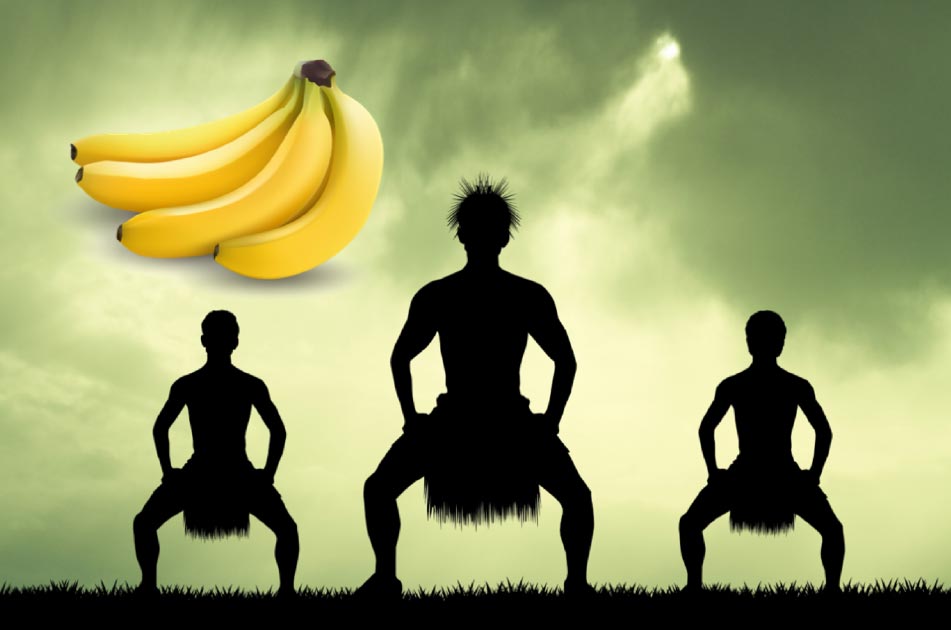Bananas Helped Ancient Lapita Culture Colonize Oceania
Scientists studying the teeth of the ancient Lapita people of Oceania, have found evidence that they survived on bananas, along with seeds and other fruits. This discovery is helping researchers to understand how the remarkable Lapita people successfully colonized some of the most remote islands in the Pacific. However, researchers also found that the ancient people’s diet did not save them from the curse of scurvy.
Researchers from the University of Otago and Australia National University were analyzing remains found in a Lapita burial ground at Teouma on Efate Island, which is part of the Vanuatu archipelago in the Pacific Ocean. This site was first discovered in 2006 and it contained up to 70 skeletons that date back to 3,300 years ago. The remains are thought to belong to some of the first Lapita to colonize the archipelago, which is part of what is known as Remote Oceania.
Unusual Burial Practices of Lapita
The Lapita are the ancestors of many of the modern Polynesians and Melanesians. They are believed to have been the first to colonize many uninhabited islands in the Pacific, including Vanuatu and the Bismarck Archipelago. The Lapita sailed from Near Oceania to Remote Oceania in what has been described as “one of the most challenging migration events in human history,” states The Daily Mail.

Map showing the areas in which the Lapita people colonized. They moved from Near Oceania (left) to Remote Oceania (right). Teouma in Efate Island, where the burial site was found, can be seen within Remote Oceana. (Monica Tromp / Nature Human Behaviour)
The Daily Mail reports that “deciphering much information from the site has been a challenge due to the bizarre nature in which the bodies were buried.” This is because the skulls of the deceased were removed and buried elsewhere, as part of Lapita funerary customs. The burial ground, which is the largest Lapita cemetery found, in total only contained seven skulls and these were placed in pots or with the limbs of skeletons. The Daily Mail quotes the researchers as saying that a few loose teeth were unearthed “where the skull should have been or in the thoracic region.” The teeth still had some remnants of tartar, which provided researchers with important clues.
- New study suggests that the Philippines is the ancestral homeland of Polynesians
- New research suggests Tonga was a vast seafaring empire
- DNA Study Unravels Mystery Behind Origins of First Pacific Islanders

Skeletons of the Lapita people unearthed at a 3,300-year-old cemetery at Teouma on Efate Island. (Frederique Valentin / PNAS)
Banana Seed Stuck in Teeth
Scimex reports that “the researchers looked at the minute mineral particles from plants that were deposited in the teeth tartar.” This was evidence that the first people of Vanuatu had a diet based on palm-type plants, such as bananas and seeds from shrubs. Significantly, this is the first evidence of banana seeds being found in Remote Oceania.
This is providing insights into how the Lapita colonized the area. It seems that the settlers brought bananas with them. These would have been ‘cultiwild’ varieties of bananas and plants that have not been fully domesticated. The fruit would not only have provided sustenance for the early settlers but would have been used for many other purposes. It seems that like other humans around the globe, the Lapita had developed strong teeth to eat the hard plants and seeds.

Mineral particles from the tartar analyzed on the teeth of the Lapita people buried at the archaeological cemetery site of Teouma, on Efate Island. (Monica Tromp / Nature Human Behaviour)
Bananas, Settlement and Survival
The Daily Mail quotes the researchers as saying that “as well as being a major staple food crop in most tropical environments today, bananas have a myriad of uses besides human consumption.” The bananas would have been cultivated by the settlers and would have used the plant for other purposes. The Otago University researchers believe that the seed and leaf of the fruit would have been used “as a building material, jewelry, textiles, food wrappings and plates, cordage, ceremonial use or medicine.”
Vanuatu was one of the last areas to be colonized by humans and it was thanks in part to the banana. The fruit was essential for the early Lapita society as they struggled to adapt to their new environment. Cultivating the fruit and foraging for food was key to their ability to survive in this unexplored area of the world. According to the Nature Human Behaviour Journal, it is “providing direct evidence for the importance of forests and arboriculture during the settlement of Remote Oceania.”
Harsh Lives of the First Settlers
The diet of the settlers was not that nutritious. Experts have found evidence, in the bones of those interred in the cemetery, that they suffered from vitamin deficiencies. This suggests that they would have struggled with problems such as scurvy. The early colonials would have had a tough and harsh existence in the archipelago.
The findings are allowing researchers to understand how people were able to colonize one of the globe’s most remote areas. It is also allowing them to build up a picture of a remarkable ancient culture. A full report on the study has been published by the online journal Nature Human Behaviour.
Top image: Main: Indigenous Polynesians. Credit: adrenalinapura / Adobe Stock. Inset: Bananas. Credit: Pongsak / Adobe Stock
By Ed Whelan

















